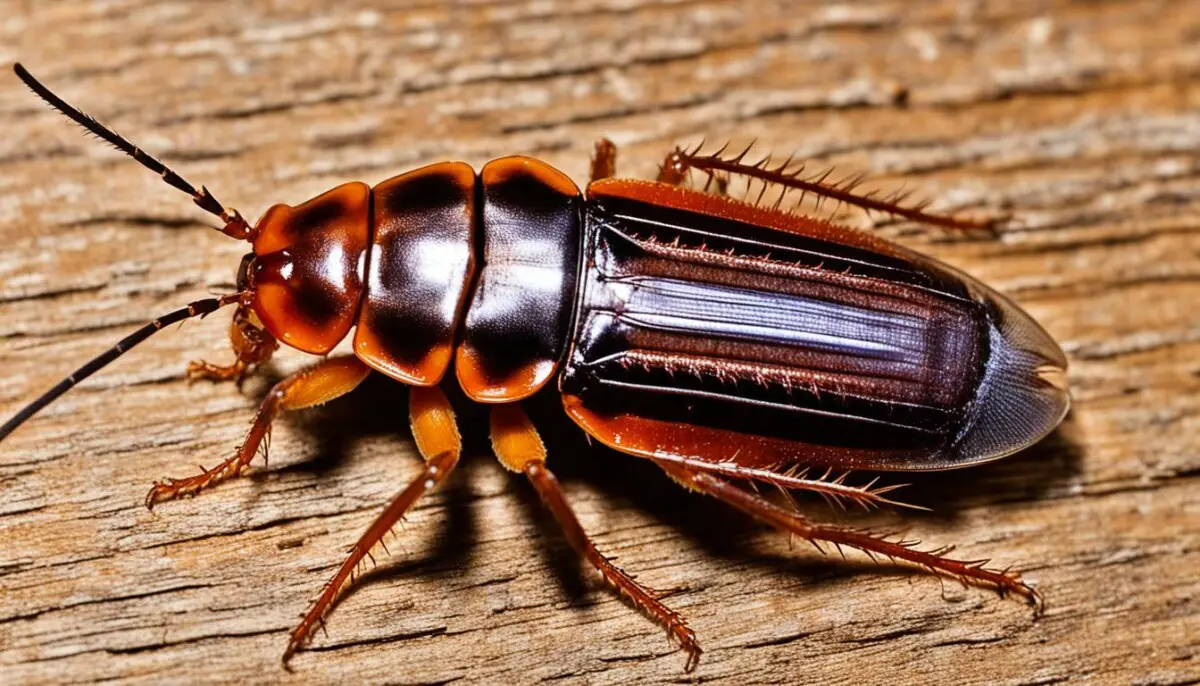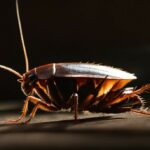Last Updated on 3 months by Francis
Dubia roaches, also known as Guyana orange spotted cockroaches, are popular feeder insects for zoo animals and reptiles. Breeding them yourself can provide a self-sustaining colony and a healthy food source for your animals. This guide will provide you with all the information you need on how to care for and breed dubia cockroaches successfully.
Contents
Key Takeaways:
- Learn how to breed dubia cockroaches for a self-sustaining feeder insect colony.
- Discover dubia cockroach husbandry techniques and care tips.
- Explore breeding techniques and processes suitable for beginners.
- Understand the importance of successful dubia cockroach breeding and colony management.
Breeding versus buying
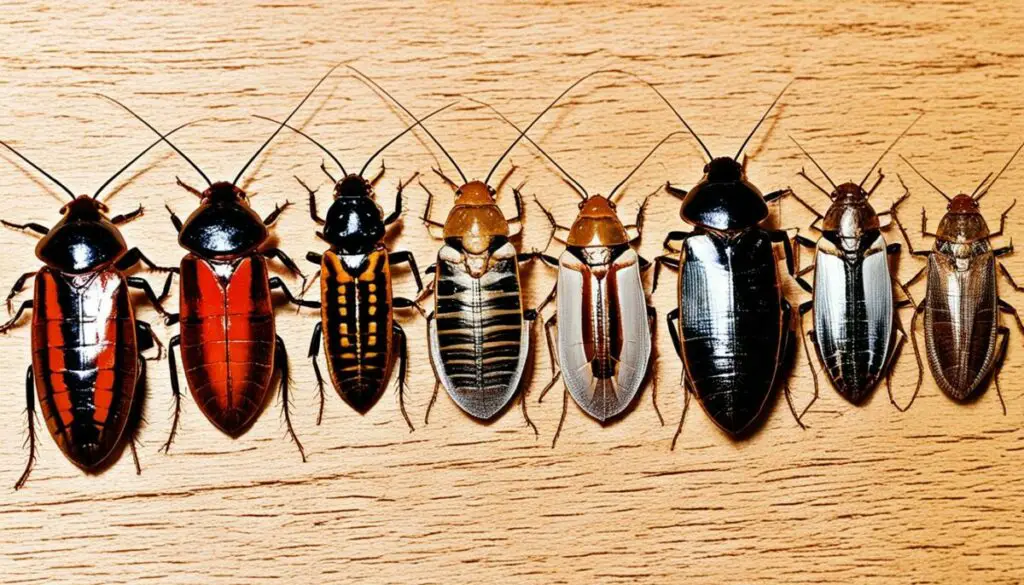
When it comes to sourcing dubia roaches for your animals, you have two options: breeding them yourself or buying them from a supplier. Let’s explore the advantages of breeding dubia roaches and the considerations for buying them.
Advantages of breeding dubia roaches
By breeding your own dubia roaches, you have full control over their nutrition. You can ensure that they are well-nourished, providing optimal health benefits for the animals you feed them to. This control over their diet is particularly beneficial if you have specific dietary requirements for your animals or if you want to customize the nutritional content of the roaches.
Another advantage of breeding dubia roaches is the flexibility it offers. When you breed your own roaches, you can have roaches of different sizes readily available. This is especially useful if you have animals of varying sizes and dietary needs. You can adjust the size of the roaches to match the appetite and requirements of each animal, ensuring they receive adequate nutrition.
Additionally, breeding dubia roaches can be a cost-effective option in the long run. While there is an initial investment in setting up a breeding colony, the ongoing costs are significantly lower compared to buying roaches regularly. Breeding roaches allows you to have a self-sustaining supply, eliminating the need for repetitive purchases.
Considerations for buying dubia roaches
While breeding dubia roaches has its advantages, there are also important factors to consider before deciding to buy them instead.
Space is a significant consideration when it comes to breeding roaches. Breeding colonies require enough space to accommodate the growing population. If you have limited space or live in a small apartment, buying roaches might be a more practical option.
The time commitment involved in breeding dubia roaches is another aspect to keep in mind. Maintaining a breeding colony requires regular care and attention. You’ll need to dedicate time to feed and clean the colony, as well as monitor their health and breeding progress. If you have a busy schedule or prefer a more hands-off approach, buying roaches may be a better choice for you.
Lastly, potential allergies can arise when handling dubia roaches. Some individuals may develop allergies to roaches or their droppings with excessive exposure. If you or anyone in your household has existing allergies, it’s essential to take precautions or consider buying roaches instead.
Ultimately, the decision between breeding and buying dubia roaches depends on your specific circumstances and preferences. Take into account the advantages of breeding, such as nutritional control and flexibility, as well as the considerations involved in terms of space, time commitment, and potential allergies.
Caution: Allergy risk for dubia cockroaches

When breeding dubia cockroaches, it’s essential to be aware of the potential allergy risk associated with these insects. Some individuals may develop allergies to dubia roaches or their droppings with excessive handling and exposure. Allergic reactions can manifest as itchy skin, eyes, nasal congestion, coughing, and sneezing. Individuals with asthma may be at a higher risk for experiencing allergic symptoms.
To minimize the risk of allergies, it is recommended to take precautions when handling dubia cockroaches. Here are some measures you can take:
- Handle dubia roaches in a well-ventilated area to reduce allergen exposure.
- Wear gloves when handling roaches to protect your skin and minimize contact.
- Consider using a respirator or mask to prevent inhalation of allergens.
If you experience persistent or worsening symptoms, it is advisable to seek medical advice. Allergies can vary in severity, and individual sensitivities can differ. It’s important to prioritize your health and well-being when breeding dubia roaches.
Quote:
“Allergic reactions to dubia cockroaches can be a real concern, especially for individuals with pre-existing sensitivities or asthma. Taking necessary precautions and being vigilant about minimizing exposure can help ensure a safer breeding experience.”
Focused on dubia cockroaches, but what about other species?
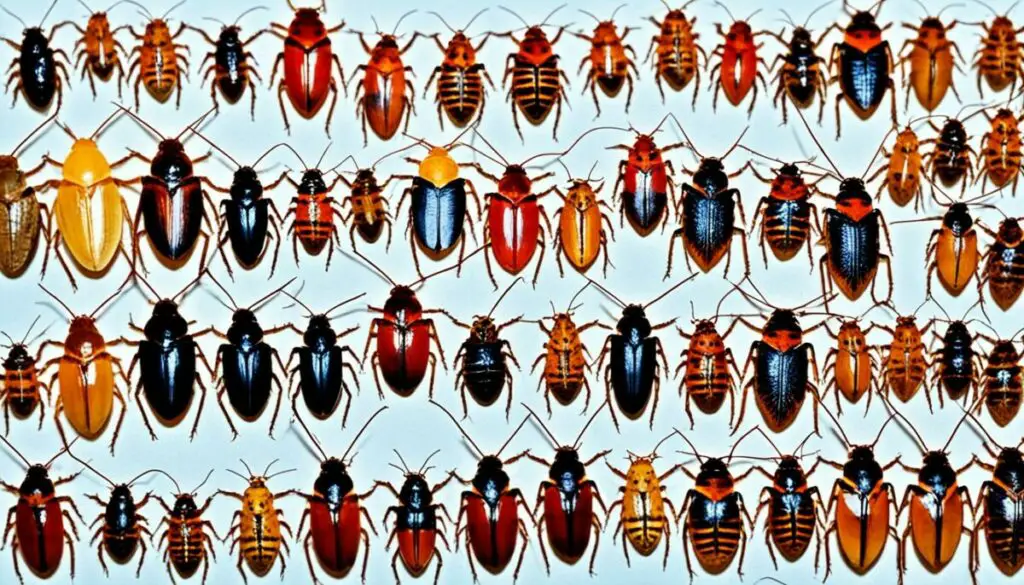
While this guide primarily focuses on dubia cockroaches, there are other species of feeder cockroaches that you can consider as well. These alternative feeder insects can provide variety and cater to the specific needs of your animals. Some popular options include:
- Death’s head cockroach
- Red runner cockroach
- Madagascar hissing cockroach
Each species may come with its own set of breeding challenges and specific requirements for environmental conditions, husbandry, and nutrition. It’s important to research and adapt your approach based on the species you choose.
However, if you are a beginner or looking for an easy-to-care-for and breed feeder insect, dubia cockroaches are highly recommended. Their popularity stems from their simplicity in both care and breeding, making them an ideal starting point for newcomers to the world of breeding roaches.
By focusing on dubia cockroaches, this guide aims to provide comprehensive information and guidance for successful breeding. However, it’s important to explore other options and tailor your approach to the specific needs of your animals.
Be prepared before you begin
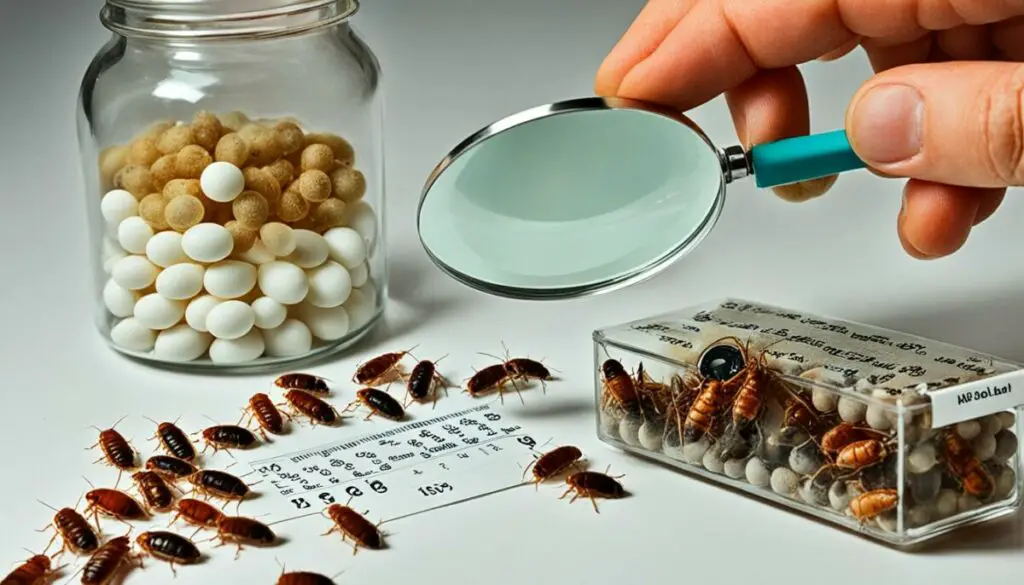
Before starting a breeding colony of dubia roaches, it is important to be prepared. Planning is key to ensuring a successful breeding journey. Consider the following factors to set yourself up for success:
1. Determine your feeding needs
Firstly, think about the number of animals you want to feed with dubia roaches. This will help you estimate the quantity of roaches you will need to breed. Take into account the size and appetite of your animals to ensure you can meet their nutritional requirements.
2. Assess available resources
Take stock of the resources, time, and space you can allocate to your dubia roach breeding colony. Breeding and caring for dubia roaches require certain supplies and resources, so make sure you have everything you need. This includes:
- Enclosure bins: Choose appropriate plastic storage containers with smooth sides and lids for your roaches’ habitat. These bins will serve as the breeding grounds for your colony.
- Temperature and humidity control: Consider investing in a heating pad or heat lamp to maintain the ideal temperature range of 15 to 25 degrees Celsius (60 to 80 degrees Fahrenheit). You may also need a hygrometer to monitor and regulate the humidity levels between 40% and 60%.
- Food and water sources: Stock up on fruits, vegetables, grains, and commercially available roach chow to provide a balanced diet for your roaches. Ensure you have shallow bowls or dishes for water that the roaches can climb in and out of.
- Cleaning supplies: Prepare cleaning supplies such as gloves, brushes, and disinfectants to maintain cleanliness and hygiene in your roach breeding area.
3. Time commitment
Breeding and managing a dubia roach colony requires regular care and attention. Consider how much time you can dedicate to feeding, cleaning, and maintaining the breeding environment. It is essential to provide consistent care to ensure the health and productivity of your colony.
4. Plan for expansion
Anticipate future growth and plan accordingly. While starting with a small colony is recommended for beginners, it’s important to think ahead and have a plan for scaling up if needed. Ensure you have enough space and resources to accommodate a larger population, should your breeding efforts be successful.
By considering these factors and thoroughly preparing, you increase your chances of successfully breeding dubia roaches and establishing a self-sustaining food source for your animals.
How to create a suitable environment for a breeding colony
Dubia roaches require a suitable environment for breeding, ensuring their health and successful reproduction. Creating the right conditions will contribute to the overall well-being of your colony. Here are some key factors to consider:
Location for Breeding Dubia Roaches
Choose a location that provides a conducive environment for your dubia roach breeding colony. It should have:
- Adequate light/dark cycles to simulate their natural habitat.
- Good air circulation to prevent stagnant air and maintain fresh oxygen levels.
- Avoid loud noises or frequent disturbances that may stress the roaches.
Enclosure Bins for Dubia Roaches
Ensuring proper housing is crucial for the well-being of your dubia roach colony. Use plastic storage containers with smooth sides, including lids for ventilation purposes. The container size will depend on the number of roaches you plan to breed. Larger containers allow for a larger population, but ensure they are easy to maintain and clean.
Temperature and Humidity for Breeding Dubia Roaches
Dubia roaches thrive in specific temperature and humidity ranges. Maintain an ambient temperature of 15 to 25 degrees Celsius (60 to 80 degrees Fahrenheit) within the breeding environment. This optimal temperature range encourages the roaches’ metabolic activity and breeding behavior.
Additionally, the humidity level should be between 40% and 60%. This ensures that the roaches have enough moisture for their survival and reproduction. Consider using a hygrometer to monitor humidity levels regularly.
- Provide egg cartons as shelter options for the roaches. The egg cartons offer them a safe haven and encourage breeding.
- Ensure proper ventilation in the enclosure to maintain adequate airflow. This prevents the accumulation of moisture and helps maintain optimal humidity levels.
By creating the ideal environment for your dubia roach breeding colony, you provide the conditions necessary for their health, reproduction, and the longevity of your self-sustaining food source.
How to feed your dubia roaches
Proper feeding is crucial for the health and breeding success of dubia roaches. To ensure your roaches receive adequate nourishment, follow these key feeding guidelines:
- Provide water in shallow bowls that the roaches can easily climb in and out of. This allows them to stay hydrated.
- Choose a balanced diet for your roaches, including a variety of fruits, vegetables, and grains. This ensures they receive essential vitamins and minerals.
- Consider using commercially available roach chow or preformulated insect diets. These products are formulated to meet the nutritional needs of dubia roaches.
- Gut-loading is another effective method to enhance the nutritional value of dubia roaches. Feed your roaches with high-quality, nutrient-rich foods prior to offering them as feeders to your animals.
- However, be cautious about providing a diet that is too high in protein. While dubia roaches are a good source of protein, excessive protein intake can lead to uric acid buildup in the roaches, potentially causing harm to the animals that consume them.
To summarize, a well-rounded diet and proper hydration are essential for the health of your dubia roaches. Consider using preformulated diets and gut-loading techniques to optimize their nutritional value. However, be careful not to overfeed them with excessive protein, as this can have negative consequences for both the roaches and the animals they are fed to.
Nutritional Value Comparison of Dubia Roaches and Other Feeder Insects
| Insect Species | Protein (%) | Fat (%) | Calcium (%) | Phosphorus (%) |
|---|---|---|---|---|
| Dubia Roaches | Approximately 35% | Approximately 15% | Approximately 2% | Approximately 1.5% |
| Mealworms | Approximately 20% | Approximately 13% | Approximately 0.1% | Approximately 0.4% |
| Crickets | Approximately 20% | Approximately 6% | Approximately 0.1% | Approximately 0.4% |
| Black Soldier Fly Larvae | Approximately 42% | Approximately 33% | Approximately 0.9% | Approximately 1.9% |
As shown in the table above, dubia roaches have a high protein and fat content compared to other common feeder insects. They also contain essential minerals such as calcium and phosphorus, which are important for the overall health of reptiles and other animals that consume them.
How to manage your breeding colony
Successfully managing a dubia roach breeding colony requires careful planning and attention to detail. By following these steps, you can ensure the growth and productivity of your colony.
1. Plan Your Colony
Before setting up your breeding colony, consider the number of roaches you will need and the desired outcome. Assess the needs of your animals and determine the appropriate size of the colony to sustain them. Plan for the future by taking into account the breeding cycle and the time it takes for nymphs to mature into adults.
2. Introduce Adult Roaches
To begin your colony, introduce adult roaches to the breeding bin. These adults will mate and produce offspring, ensuring the continuity of your colony. Monitor their mating behavior and provide suitable conditions to encourage successful reproduction.
3. Regularly Clean Enclosure Bins
Maintaining a clean environment is vital for the health and well-being of your roaches. Regularly clean the enclosure bins to remove excess frass (roach droppings) and maintain cleanliness. Ensure the bins are dry and free from debris that may accumulate and attract pests.
4. Understand the Breeding Cycle and Care for Nymphs
Grasp the breeding cycle of dubia roaches to optimize their reproduction. Provide suitable hiding spaces, such as egg cartons, for females to deposit their ootheca (egg cases). Monitor the development of nymphs and provide the necessary care for their growth and maturation. Ensure they have access to proper nutrition, hydration, and a suitable environment.
5. Scale Up Your Breeding Setup
If the demand for roaches increases or you wish to expand your breeding operation, consider scaling up your setup. This may involve adding more breeding bins or creating a larger space for your colony. Ensure the new setup meets the requirements for temperature, humidity, and ventilation.
6. Monitor the Health and Population
Regularly monitor the health and population of your breeding colony. Check for signs of disease, stress, or overcrowding. Maintain a balance between the number of roaches and the available resources to ensure their well-being.
7. Harvesting Roaches
When it’s time to harvest roaches for feeding, be mindful of the needs of your animals and the size of the roaches required. Select roaches of appropriate sizes to provide optimal nutrition to your animals.
By following these steps, you can effectively manage your dubia roach breeding colony and ensure a sustainable supply of feeder insects for your animals.
Conclusion
Breeding dubia cockroaches offers numerous benefits for those seeking a self-sustaining food source for their animals. By implementing proper care and breeding techniques, you can establish and maintain a thriving colony of dubia roaches. The advantages of breeding include the ability to control the nutritional content of the roaches and the flexibility to provide various sizes to meet the needs of your animals.
However, it is important to be aware of the potential allergy risk associated with handling dubia roaches. Taking precautions such as handling them in well-ventilated areas, wearing gloves, and using respiratory protection can help minimize the risk. Additionally, breeding dubia roaches requires proper preparation, including analyzing resources, space availability, and time commitment.
In conclusion, with the right approach, breeding dubia roaches can be a rewarding endeavor that benefits both you and your animals. By taking into account the considerations and benefits discussed, you can successfully breed dubia roaches and establish a sustainable food source for your beloved pets.
FAQ
What are the advantages of breeding dubia roaches instead of buying them?
Breeding dubia roaches allows for control over their nutrition, flexibility in having roaches of different sizes, and can be a cost-effective option in the long run.
Are there any allergy risks associated with dubia roaches?
Yes, some individuals may develop allergies to dubia roaches or their droppings with excessive handling and exposure. It is important to take precautions and seek medical advice if symptoms persist or worsen.
Can other species of cockroaches be bred as feeder insects?
Yes, other species such as the Death’s head cockroach, red runner cockroach, and Madagascar hissing cockroach can be bred. However, each species may have its own specific requirements.
What should I consider before starting a breeding colony of dubia roaches?
Before starting a breeding colony, consider the number of animals you need to feed, the quantity of roaches required, and the resources, time, and space you can dedicate to your colony.
How do I create a suitable environment for a dubia roach breeding colony?
Select a location with adequate light/dark cycles, air circulation, and minimal disturbances. Use plastic storage containers with smooth sides as enclosure bins, maintain the right temperature and humidity, and provide egg cartons for shelter and a ventilation system for airflow.
What should I feed my dubia roaches?
Provide water in shallow bowls and a balanced diet of fruits, vegetables, grains, and commercially available roach chow. Consider preformulated insect diets and gut-loading techniques for enhanced nutrition. Be cautious about feeding a high-protein diet.
How do I manage my dubia roach breeding colony?
Plan your colony, introduce adult roaches to the breeding bin, regularly clean the enclosure bins, understand the breeding cycle and care for nymphs, and scale up your breeding setup as needed.

